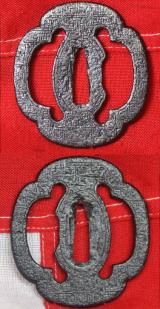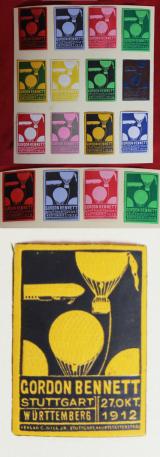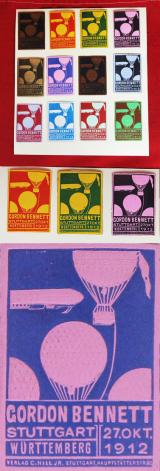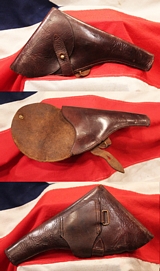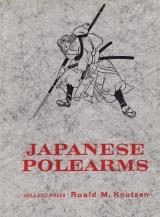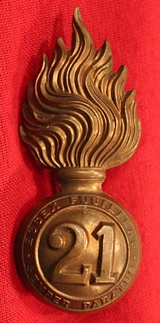1929 Graf Zeppelin Round the World, White Bisque Porcelain Meissen Medal 1929
From a small collection of most rare Meissen porcelain medals of the Graf Zeppelin round the world flight. three different variations of the same medal. Perfect for either early aviation and airship collectors, rare medal collectors, or collectors of finest German porcelain from the Weimar period
This rare medal was made by the famous Meissen factory in Germany to commemorate the first circumnavigation of the world by an airship, the ‘Graf Zeppelin’ in August 1929. Designed by Ludwig Durr but conceived and operated by Dr Hugo Eckener, Chairman of the German company Luftschiffbau Zeppelin, the rigid airship was built at their works at Friedrichshafen between 1926 and 1928 and was intended to demonstrate the viability of intercontinental commercial air travel. It was the largest airship in the world at that time.
Co-sponsored by the American newspaper magnate William Randolph Hearst, the round the world flight took off from Lakehurst Naval Air Station, New Jersey, on 8 August heading east with Eckener in command. As well as the crew there were 20 passengers on board and four Hearst staff including the Australian explorer Hubert Wilkins, a cameraman and a British reporter, Lady Grace Drummond-Hay, who became the first woman to circumnavigate the world by air. Having refuelled at Friedrichshafen the flight continued across Eastern Europe and the Soviet Union to Tokyo, then on to California, landing at Los Angeles to complete the first ever nonstop flight across the Pacific Ocean. The final leg from Los Angeles to Lakehurst ended on 29 August, three weeks after the airship had departed. Actual flying time was 12 days, 12 hours, and 13 minutes, the fastest circumnavigation of the globe at the time.
The company then used the airship on its transatlantic service and for 5 years provided a commercial passenger and mail service between Germany and Brazil. ‘Graf Zeppelin’ made 590 flights totalling almost 1.7 million kilometres and was the first aircraft to fly over a million miles. It flew a total of 17,177 hours (nearly two years), without injuring a passenger or crewman. It was operated by a crew of 36, and could carry 24 passengers, who were treated to 3 hot meals a day with fine wines in the dining room and entertainment on board. The operational spaces, common areas, and passenger sleeping cabins were built into a gondola structure beneath the airframe.
Eckener had been outspoken in his dislike of the Nazi Party so that when they took power in 1933 he was replaced by his former colleague Lehmann and the ‘Graf Zeppelin’ was commandeered for a new airline. The Nazis used the airship as a propaganda tool until it was withdrawn from service after the Hindenburg disaster in 1937. The airship was scrapped and the metal airframes melted down for military aircraft production in 1940 - a dismal end for the most successful airship of all time, about which Lady Drummond-Hay had written:
“The Graf Zeppelin is a ship with a soul. You have only to fly in it to know that it's a living, vibrant, sensitive and magnificent thing”
With its extraordinary fineness and silky matt surface, bisque porcelain exudes an unmistakable charm. Sculptural qualities, modelling skills and decorations such as reliefs are shown to full effect and are further accentuated by the material’s fascinating tactile quality. Developed in the 18th century by the French painter Jean-Jacques, the fine material rose to prominence as a substitute for ivory, alabaster and marble in the manufacture of the Château Vincennes. To this day, bisque porcelain is often compared to marble because of its unique way of diffusing light rather than reflecting it. At MEISSEN, this effect and material quality is achieved by polishing the unglazed surface of fired porcelain pieces in painstaking detail, resulting in the bisque's characteristic velvety soft surfaces.
Porcelain in its purest form. Contrary to popular belief, bisque porcelain has the same properties as its glazed counterparts in terms of density, hardness, strength and resistance. By omitting the glaze, details, such as sculptural swerves, elaborate embossing work and decorations, such as reliefs, are highlighted and given a unique tactile quality, showing off the skills of Meissen artisans in a particularly compelling way read more
265.00 GBP
1929 Graf Zeppelin Round the World, White Bisque Porcelain Meissen Medal 1929. Flat Rimmed, with Silvered Zeppellin
From a small collection of most rare Meissen porcelain medals of the Graf Zeppelin round the world flight. three different variations of the same medal. Perfect for either early aviation and airship collectors, rare medal collectors, or collectors of finest German porcelain from the Weimar period.
The photos show the medal as somewhat grey porcelain, because, although it is brilliant white in reality, we have to darken it in the gallery in order to photograph its detail. See photo 6 in the gallery showing its more accurate whiteness, but no detail can be seen.
This rare medal was made by the famous Meissen factory in Germany to commemorate the first circumnavigation of the world by an airship, the ‘Graf Zeppelin’ in August 1929. Designed by Ludwig Durr but conceived and operated by Dr Hugo Eckener, Chairman of the German company Luftschiffbau Zeppelin, the rigid airship was built at their works at Friedrichshafen between 1926 and 1928 and was intended to demonstrate the viability of intercontinental commercial air travel. It was the largest airship in the world at that time.
Co-sponsored by the American newspaper magnate William Randolph Hearst, the round the world flight took off from Lakehurst Naval Air Station, New Jersey, on 8 August heading east with Eckener in command. As well as the crew there were 20 passengers on board and four Hearst staff including the Australian explorer Hubert Wilkins, a cameraman and a British reporter, Lady Grace Drummond-Hay, who became the first woman to circumnavigate the world by air. Having refuelled at Friedrichshafen the flight continued across Eastern Europe and the Soviet Union to Tokyo, then on to California, landing at Los Angeles to complete the first ever nonstop flight across the Pacific Ocean. The final leg from Los Angeles to Lakehurst ended on 29 August, three weeks after the airship had departed. Actual flying time was 12 days, 12 hours, and 13 minutes, the fastest circumnavigation of the globe at the time.
The company then used the airship on its transatlantic service and for 5 years provided a commercial passenger and mail service between Germany and Brazil. ‘Graf Zeppelin’ made 590 flights totalling almost 1.7 million kilometres and was the first aircraft to fly over a million miles. It flew a total of 17,177 hours (nearly two years), without injuring a passenger or crewman. It was operated by a crew of 36, and could carry 24 passengers, who were treated to 3 hot meals a day with fine wines in the dining room and entertainment on board. The operational spaces, common areas, and passenger sleeping cabins were built into a gondola structure beneath the airframe.
Eckener had been outspoken in his dislike of the Nazi Party so that when they took power in 1933 he was replaced by his former colleague Lehmann and the ‘Graf Zeppelin’ was commandeered for a new airline. The Nazis used the airship as a propaganda tool until it was withdrawn from service after the Hindenburg disaster in 1937. The airship was scrapped and the metal airframes melted down for military aircraft production in 1940 - a dismal end for the most successful airship of all time, about which Lady Drummond-Hay had written:
“The Graf Zeppelin is a ship with a soul. You have only to fly in it to know that it's a living, vibrant, sensitive and magnificent thing”
With its extraordinary fineness and silky matt surface, bisque porcelain exudes an unmistakable charm. Sculptural qualities, modelling skills and decorations such as reliefs are shown to full effect and are further accentuated by the material’s fascinating tactile quality. Developed in the 18th century by the French painter Jean-Jacques, the fine material rose to prominence as a substitute for ivory, alabaster and marble in the manufacture of the Château Vincennes. To this day, bisque porcelain is often compared to marble because of its unique way of diffusing light rather than reflecting it. At MEISSEN, this effect and material quality is achieved by polishing the unglazed surface of fired porcelain pieces in painstaking detail, resulting in the bisque's characteristic velvety soft surfaces.
Porcelain in its purest form. Contrary to popular belief, bisque porcelain has the same properties as its glazed counterparts in terms of density, hardness, strength and resistance. By omitting the glaze, details, such as sculptural swerves, elaborate embossing work and decorations, such as reliefs, are highlighted and given a unique tactile quality, showing off the skills of Meissen artisans in a particularly compelling way. read more
275.00 GBP
An Edo Period Iron Mokko Form Tsuba Engraved with Geometric Manji Design
The tsuba, is a fundamental element in the mounting of the Japanese sword, it is the guard, the most important element of the fittings, and has two main functions: the first to protect the hand against the slashes and lunges of an opposing sword; the second is to prevent that the hand ends up directly on the cutting edge of the blade. Over the course of more than ten centuries of history, the tsuba has undergone a number of important changes, as regards the materials used for its manufacture and its appearance.
During the centuries of wars that characterised Japan until the advent of the Tokugawa Shogunate during the first half of the 17th century, the tsuba was essentially made of iron or steel. From the mid-17th century onwards the tsuba became a real work of art, with the use of soft metals used in various ways, with engravings, incrustations; well made tsuba were the pride of hundreds of craftsmen’s schools whose value sometimes exceeded that of the same blades of the mounting where tsuba was part of.
72 mm. height read more
225.00 GBP
Germany 1912 Gordon Bennett Zeppelin Airship Flight, 12 Poster Vignette Cinderella Stamps
Original, period vignette for 1912 Gordon Bennett air show with pioneering German Zeppelin before WWI. Size 1.5 x 2 inches Gum: MH {Mint Hinged} Photographed against a card background, but all the stamps are gummed and separate.
Very rare to get large number sets. Two sets of x 12, we have 24 but we have split them for sale into 2 sets of 12.
The 1914 Cazin and Rochas catalog claims they were printed in nine colours of ink on nine different papers
The Gordon Bennett Cup (or Coupe Aéronautique Gordon Bennett) is the world's oldest gas balloon race, and is "regarded as the premier event of world balloon racing" according to the Los Angeles Times. Referred to as the "Blue Ribbon" of aeronautics, the first race started from Paris, France, on September 30, 1906. The event was sponsored by James Gordon Bennett Jr., the millionaire sportsman and owner of the New York Herald newspaper. According to the organizers, the aim of the contest "is simple: to fly the furthest distance from the launch site." The contest ran from 1906 to 1938, interrupted by World War I and in 1931, but was suspended in 1939 when the hosts, Poland, were invaded at the start of World War II. The event was not resurrected until 1979, when American Tom Heinsheimer, an atmospheric physicist, gained permission from the holders to host the trophy.
With its extraordinary fineness and silky matt surface, bisque porcelain exudes an unmistakable charm. Sculptural qualities, modelling skills and decorations such as reliefs are shown to full effect and are further accentuated by the material’s fascinating tactile quality. Developed in the 18th century by the French painter Jean-Jacques, the fine material rose to prominence as a substitute for ivory, alabaster and marble in the manufacture of the Château Vincennes. To this day, bisque porcelain is often compared to marble because of its unique way of diffusing light rather than reflecting it. At MEISSEN, this effect and material quality is achieved by polishing the unglazed surface of fired porcelain pieces in painstaking detail, resulting in the bisque's characteristic velvety soft surfaces.
Porcelain in its purest form. Contrary to popular belief, bisque porcelain has the same properties as its glazed counterparts in terms of density, hardness, strength and resistance. By omitting the glaze, details, such as sculptural swerves, elaborate embossing work and decorations, such as reliefs, are highlighted and given a unique tactile quality, showing off the skills of Meissen artisans in a particularly compelling way read more
180.00 GBP
Germany 1912 Gordon Bennett Zeppelin Airship Flight, 12 Poster Vignette Cinderella Stamps
Original, period vignette for 1912 Gordon Bennett air show with pioneering German Zeppelin before WWI. Size 1.5 x 2 inches Gum: MH {Mint Hinged} Photographed against a card background, but all the stamps are gummed and separate.
Very rare to get large number sets. Two sets of x 12, we have 24 but we have split them for sale into 2 sets of 12.
The 1914 Cazin and Rochas catalog claims they were printed in nine colours of ink on nine different papers
The Gordon Bennett Cup (or Coupe Aéronautique Gordon Bennett) is the world's oldest gas balloon race, and is "regarded as the premier event of world balloon racing" according to the Los Angeles Times. Referred to as the "Blue Ribbon" of aeronautics, the first race started from Paris, France, on September 30, 1906. The event was sponsored by James Gordon Bennett Jr., the millionaire sportsman and owner of the New York Herald newspaper. According to the organizers, the aim of the contest "is simple: to fly the furthest distance from the launch site." The contest ran from 1906 to 1938, interrupted by World War I and in 1931, but was suspended in 1939 when the hosts, Poland, were invaded at the start of World War II. The event was not resurrected until 1979, when American Tom Heinsheimer, an atmospheric physicist, gained permission from the holders to host the trophy. read more
180.00 GBP
A Very Good British WW1, 1915, .455 MKVI Revolver Holster. An Absolute Corker!
The standard-issue Webley revolver at the outbreak of the First World War was the Webley Mk V (adopted 9 December 1913, but there were considerably more Mk IV revolvers in service in 1914, as the initial order for 20,000 Mk V revolvers had not been completed when hostilities began. On 24 May 1915, the large calibre Webley Mk VI .455 {manstopper} was adopted as the standard sidearm for British and Commonwealth troops and remained so for the duration of the First World War, being issued to officers, airmen, naval crews, boarding parties, trench raiders, machine-gun teams, and tank crews. The Mk VI proved to be a very reliable and hardy weapon, well suited to the mud and adverse conditions of trench warfare, and several accessories were developed for the Mk VI, including a bayonet (made from a converted French Gras bayonet), speedloader devices (the "Prideaux Device" and the Watson design), and a stock allowing for the revolver to be converted into a carbine.
Demand exceeded production, which was already behind as the war began. This forced the British government to buy substitute weapons chambered in .455 Webley from neutral countries. America provided the Smith & Wesson 2nd Model "Hand Ejector" and Colt New Service Revolvers. read more
125.00 GBP
1st Edition, Japanese Spears Polearms and Their Use in Old Japan Roald Knutsen,
Hardcover. Condition: Good. Dust Jacket Condition: Good.
By our local, world renowned sensei, and martial art expert and exponant, Roald Knutsen, who was the sensei of our 30 year late colleague, senpei, Christopher Fox, who was both a nihonto and Iaido expert of 40 years, and a remarkable exponent of all his martial arts in his own right.
This book charts the evolution of Japanese pole-arms from the bronze spears of the Yayoi period right up to to the Meiji Restoration; deals with the history and development of each category of spear; besides the blades, the shafts & mounts are described in detail; outlines the schools of spear and sword fencing from the early 14th century; a very necessary addition to the library of anyone interested in arms and armour; fully illustrated. Japanese spear-weapons mainly comprise the naginata (similar to the European glaive) and types of yari (pike / halberd). Hoko are a hook weapon.
This is the first book in English to provide a fully illustrated guide to the use of polearms - ranging from the earliest halberds and spears reaching Japan from the Asian mainland to the sophisticated naginata, nagamaki and various forms of yari used by the Japanese samurai through the medieval period. While the sword remains the best known of Japanese weapons, it was the halberd (naginata) and then the yari that dominated the battlefields up to the early seventeenth century, and thereafter the yari became an important status symbol to many warrior families. Additionally, the authors focus on the actual method of use of these weapons, hitherto an almost unknown aspect in the West. read more
240.00 GBP
Archaic Chinese Warrior's Bronze Sword, Around 2,300 to 2,800 Years Old, From the Zhou Dynasty to the Qin Dynasty, Including the Period of the Great Military Doctrine 'The Art of War' by General Sun-Tzu
Chinese Bronze 'Two Ring' Jian sword used in the era of the Seven Kingdoms period, likely in the Kingdom of Wu, up to the latter part of the Eastern Zhou dynasty (475 – 221 BC).
Swords of this type are called “two-ring” swords because of the prominent rings located on the hilt. this is the very type of sword used by the warriors serving under the world renowned General Sun Tzu, in the Kingdom of Wu, who is thought by many to be the finest general, philosopher and military tactician who ever lived. His 2500 year old book on the methods of warfare, tactics and psychology are still taught and highly revered in practically every officer training college throughout the world.
We show a painting in the gallery of a chariot charge by a Zhou dynasty warrior armed with this very form of sword.
The Chinese term for this form of weapon is “Jian” which refers to a double-edged sword. This style of Jian is generally attributed to either the Wu or the Yue state. The sword has straight graduated edges reducing to a pointed tip, which may indicate an earlier period Jian.
The blade is heavy with a midrib and tapered edges
A very impressive original ancient Chinese sword with a long, straight blade with a raised, linear ridge down its centre. It has a very shallow, short guard. The thin handle would have had leather or some other organic material such as leather or hemp cord, wrapped around it to form a grip. At the top is a broad, round pommel The Seven Kingdom or Warring States period in Chinese history was one of instability and conflict between many smaller Kingdom-states. The period officially ended when China was unified under the first Emperor of China, Qin pronounced Chin Shi Huang Di in 221 BC. It is from him that China gained its name.
The Zhou Dynasty (1046-256 BCE) was among the most culturally significant of the early Chinese dynasties and the longest lasting of any in China's history, divided into two periods: Western Zhou (1046-771 BCE) and Eastern Zhou (771-256 BCE). It followed the Shang Dynasty (c. 1600-1046 BCE), and preceded the Qin Dynasty (221-206 BCE, pronounced “chin”) which gave China its name.
In the early years of the Spring and Autumn Period, (770-476 BC) chivalry in battle was still observed and all seven states used the same tactics resulting in a series of stalemates since, whenever one engaged with another in battle, neither could gain an advantage. In time, this repetition of seemingly endless, and completely futile, warfare became simply the way of life for the people of China during the era now referred to as the Warring States Period. The famous work The Art of War by Sun-Tzu (l. c. 500 BCE) was written during this time, recording precepts and tactics one could use to gain advantage over an opponent, win the war, and establish peace.
Sun Tzu was a Chinese general, military strategist, writer, and philosopher who lived in the Eastern Zhou period of ancient China. Sun Tzu is traditionally credited as the author of The Art of War, an influential work of military strategy that has affected both Western and East Asian philosophy and military thinking. His works focus much more on alternatives to battle, such as stratagem, delay, the use of spies and alternatives to war itself, the making and keeping of alliances, the uses of deceit, and a willingness to submit, at least temporarily, to more powerful foes. Sun Tzu is revered in Chinese and East Asian culture as a legendary historical and military figure. His birth name was Sun Wu and he was known outside of his family by his courtesy name Changqing The name Sun Tzu by which he is more popularly known is an honorific which means "Master Sun".
Sun Tzu's historicity is uncertain. The Han dynasty historian Sima Qian and other traditional Chinese historians placed him as a minister to King Helü of Wu and dated his lifetime to 544–496 BC. Modern scholars accepting his historicity place the extant text of The Art of War in the later Warring States period based on its style of composition and its descriptions of warfare. Traditional accounts state that the general's descendant Sun Bin wrote a treatise on military tactics, also titled The Art of War. Since Sun Wu and Sun Bin were referred to as Sun Tzu in classical Chinese texts, some historians believed them identical, prior to the rediscovery of Sun Bin's treatise in 1972.
Sun Tzu's work has been praised and employed in East Asian warfare since its composition. During the twentieth century, The Art of War grew in popularity and saw practical use in Western society as well. It continues to influence many competitive endeavours in the world, including culture, politics, business and sports.
The ancient Chinese people worshipped the bronze and iron swords, where they reached a point of magic and myth, regarding the swords as “ancient holy items”. Because they were easy to carry, elegant to wear and quick to use, bronze swords were considered a status symbol and an honour for kings, emperors, scholars, chivalrous experts, merchants, as well as common people during ancient dynasties. For example, Confucius claimed himself to be a knight, not a scholar, and carried a sword when he went out. The most famous ancient bronze sword is called the “Sword of Gou Jian”.
This is one of a stunning collection of original archaic bronze age weaponry we have just acquired and has now arrived. Many are near identical to other similar examples held in the Metropolitan in New York, the British royal collection, and such as the Hunan Provincial Museum, Hunan, China.
A complimentary display stand, will be included.
As with all our items, every piece is accompanied by a certificate of authenticity. read more
2595.00 GBP
Ist Edition of 'The Rommel Papers' Printed by Collins in 1953
The Rommel Papers is the collected writings by the German World War II field marshal Erwin Rommel published in 1953.
A good volume example of the career and tactics of one of the greatest and revered generals of the war. In fact even Winston Churchill announced his demise in parliament, as the death of a noble leader of men that was not tainted, unlike many others in Germany, by the NAZI disease and corrupt influences of the Third Reich.
The book included Rommel's writings of the war, edited by the British journalist and historian B. H. Liddell Hart, the former Wehrmacht officer Fritz Bayerlein, who served on Rommel's staff in North Africa, and Rommel's widow and son. The volume contained an introduction and commentary by Liddell Hart.
Liddell Hart had a personal interest in the work: by having coaxed Rommel's widow to include material favourable to himself, he could present Rommel as his "pupil" when it came to mobile armoured warfare.
Thus, Liddell Hart's "theory of indirect approach" became a precursor to the German blitzkrieg ("lightning war"). The controversy was described by the political scientist John Mearsheimer in his work The Weight of History, who concluded that, by "putting words in the mouths of German Generals and manipulating history", Liddell Hart was in a position to show that he had been at the root of the dramatic German successes in 1940.
The historian Mark Connelly argues that The Rommel Papers was one of the two foundational works that lead to a "Rommel renaissance" and "Anglophone rehabilitation", the other being Desmond Young's biography, Rommel: The Desert Fox. The book contributed to the perception of Rommel as a brilliant commander; in an introduction, Liddell Hart drew comparisons between Rommel and Lawrence of Arabia, "two masters of desert warfare"
In World War II, he commanded the 7th Panzer Division during the 1940 invasion of France. His leadership of German and Italian forces in the North African campaign established his reputation as one of the ablest tank commanders of the war, and earned him the nickname der Wüstenfuchs, "the Desert Fox". Among his British adversaries he had a reputation for chivalry, and his phrase "war without hate" has been uncritically used to describe the North African campaign. A number of historians have since rejected the phrase as a myth and uncovered numerous examples of German war crimes and abuses towards enemy soldiers and native populations in Africa during the conflict. Other historians note that there is no clear evidence Rommel personally was involved or aware of any of these crimes, with some pointing out that the war in the desert, as fought by Rommel and his opponents, still came as close to a clean fight as there was in World War II. He later commanded the German forces opposing the Allied cross-channel invasion of Normandy in June 1944.
With the Nazis gaining power in Germany, Rommel gradually accepted the new regime. Historians have given different accounts of the specific period and his motivations. He was a supporter of Adolf Hitler, at least until near the end of the war, if not necessarily sympathetic to the party and the paramilitary forces associated with it. In 1944, Rommel was implicated in the 20 July plot to assassinate Hitler. Because of Rommel's status as a national hero, Hitler wanted to eliminate him quietly instead of having him immediately executed, as many other plotters were. Rommel was given a choice between suicide, in return for assurances that his reputation would remain intact and that his family would not be persecuted following his death, or facing a trial that would result in his disgrace and execution; he chose the former and took a cyanide pill. Rommel was given a state funeral, and it was announced that he had succumbed to his injuries from the strafing of his staff car in Normandy.
Rommel became a larger-than-life figure in both Allied and Nazi propaganda, and in postwar popular culture. Numerous authors portray him as an apolitical, brilliant commander and a victim of Nazi Germany, although this assessment is contested by other authors as the Rommel myth. Rommel's reputation for conducting a clean war was used in the interest of the West German rearmament and reconciliation between the former enemies – the United Kingdom and the United States on one side and the new Federal Republic of Germany on the other. Several of Rommel's former subordinates, notably his chief of staff Hans Speidel, played key roles in German rearmament and integration into NATO in the postwar era. The German Army's largest military base, the Field Marshal Rommel Barracks, Augustdorf, and a third ship of Lütjens-class destroyer of the German Navy are both named in his honour. His son Manfred Rommel was the longtime mayor of Stuttgart, Germany and namesake of Stuttgart Airport. read more
85.00 GBP
21st Regiment Essex Fusiliers Large Service Helmet Flaming Grenade Badge. Circa.1887
Canadian Militia busby helmet badge. 21st Regiment Essex Fusiliers Fur Busby grenade. Circa.1887 Brass grenade with two lugs to the reverse in excellent condition.
A military presence in Windsor and Essex County dates back as far as 1701, when all men in the community were essentially militia members, armed to combat a perceived 'Indian threat'. When Irish-American Nationalists invaded Canada in 1866, even stronger forces were established locally. By 1885, local militias had amalgamated into the 21st Essex Battalion of Infantry.
By the advent of the First World War, the 21st Battalion (now known as the 21st Regiment Essex Fusiliers) was placed on active service. Initially, they contributed to Canada's 1st Battalion, upon its formation in 1914, then later the 18th Battalion (consisting largely of Essex Fusilier soldiers. The 18th Battalion served in France and Flanders from 1915 until the Armistice.
The regiment perpetuated the 18th (Western Ontario) Battalion, 99th (Essex) Battalion and 241st (Canadian Scottish Borderers) Battalion of the Canadian Expeditionary Force and held its final Order of Precedence as 40. Battle honours for the regiment include: First World War: Ypres 1915 & 17, Festubert 1915, Mount Sorrel, Somme 1916 & 18, Flers-Courcelette, Thiepval, Ancre Heights, Arras 1917 & 18, Vimy 1917, Hill 70, Passchendaele, Amiens, Scarpe 1918, Hindenburg Line, Canal du Nord, Cambrai 1918, Pursuit to Mons, France & Flanders 1915-18 Second World War: Dieppe Raid (1942), Battle of Verrigres Ridge (1944), liberation of Dieppe (1944), Battle of the Scheldt (1944), The Rhine (1944-1945), Northwestern Europe
By 1926, an alliance was formed with the Essex Regiment of the British Army, and by 1927, the Essex Scottish had adopted the MacGregor tartan based on Scottish Highland tradition. That year an alliance was also established with the Queen’s Own Royal West Kent Regiment of the British Army.
The Regiment was the first unit of men in Western Ontario to be called up during World War II and one of the first Canadian units to see battle overseas. Their first fight was the tragic Dieppe raid on August 19th, 1942 where the Regiment was hit particularly hard during Operation Jubilee. When the smoke cleared, the Regiment had lost 121, and many of the survivors were either wounded or captured. With barely enough time to regroup, the regiment prepared itself for the invasion of France. On July 5th 1944, it participated in the bloody landing at Normandy, and then fought on through France, Holland and Germany until the war's end.
By then, the regiment had suffered 552 dead and had been inflicted with the highest number of casualties of any unit in the Canadian Army-a staggering 2,510. read more
245.00 GBP




